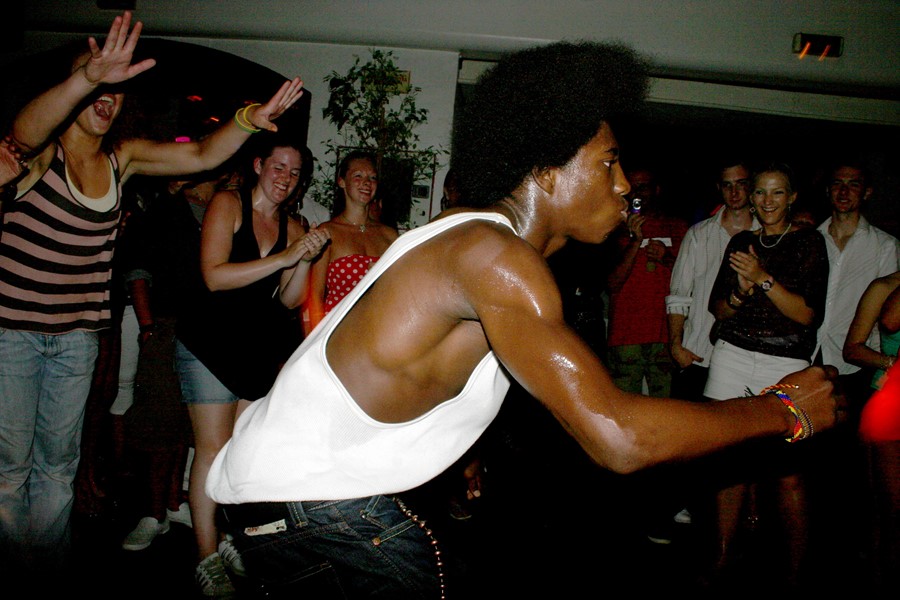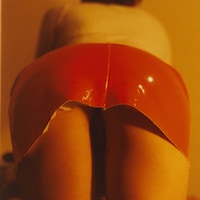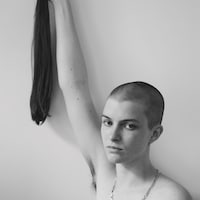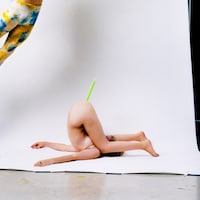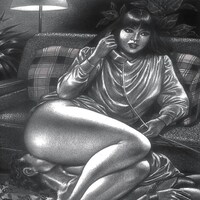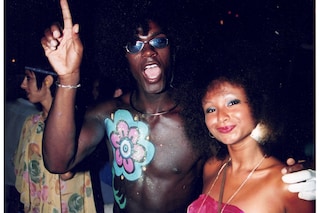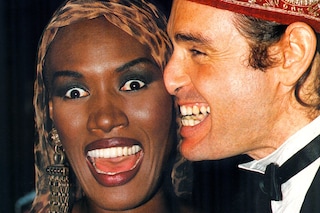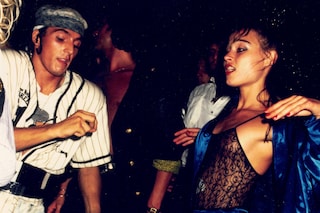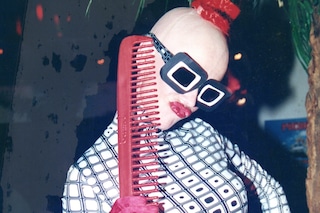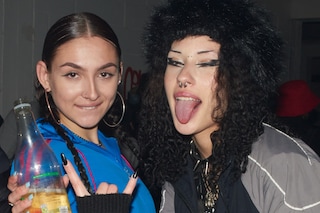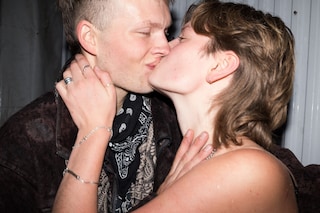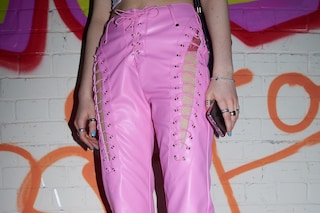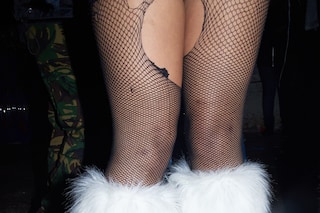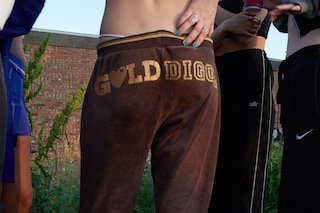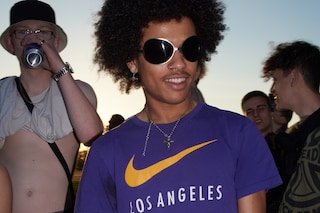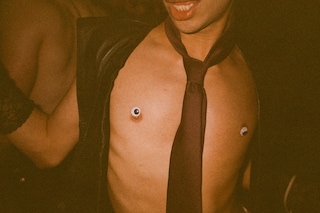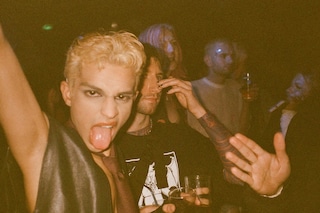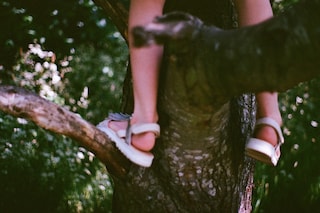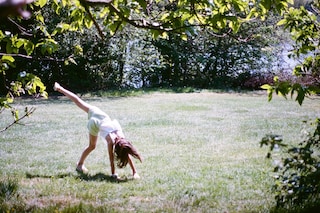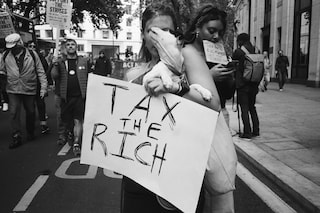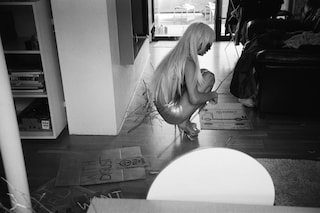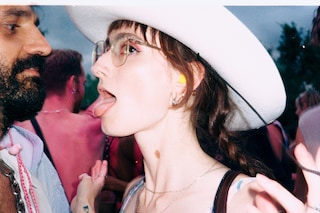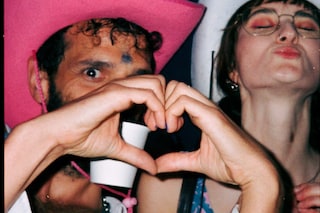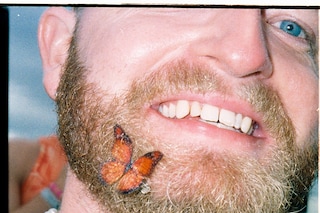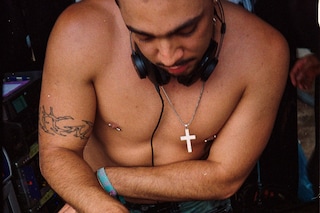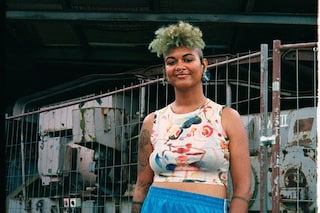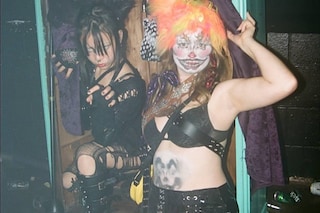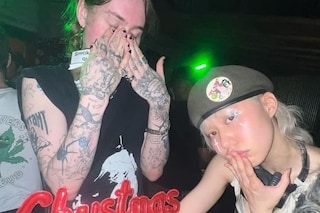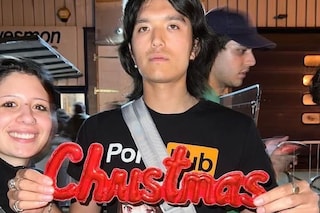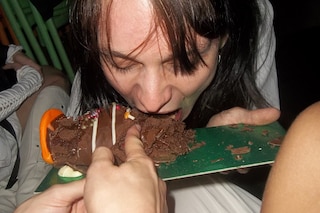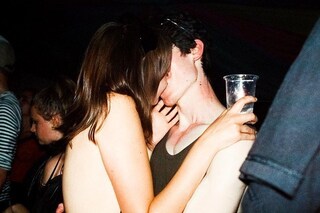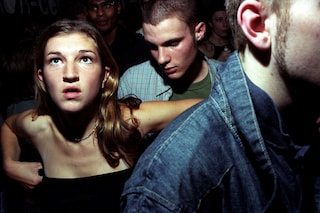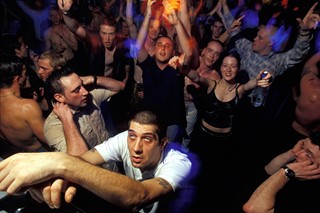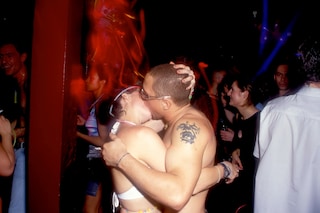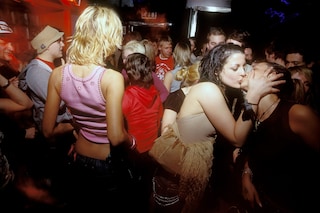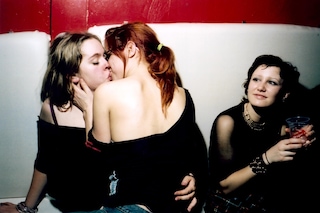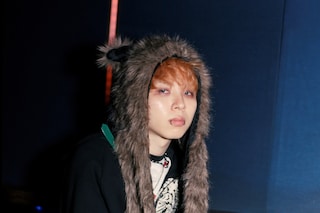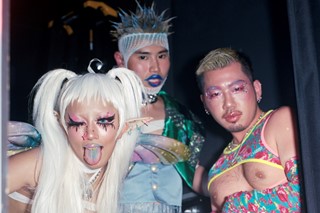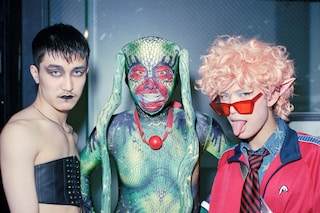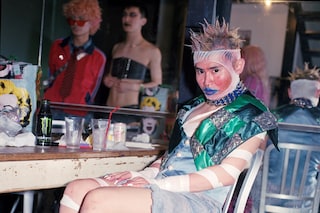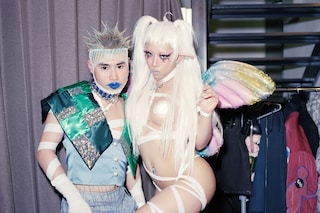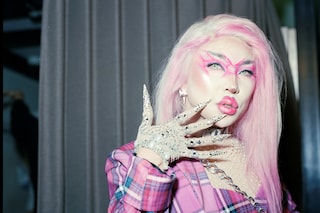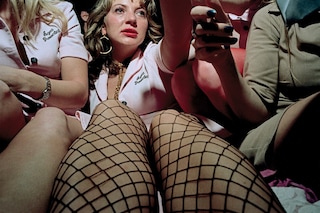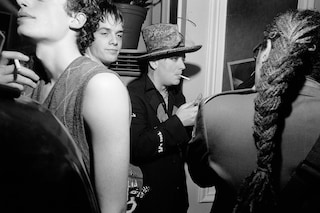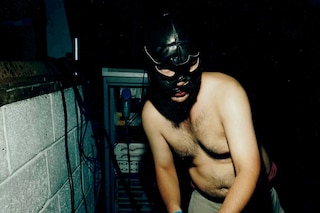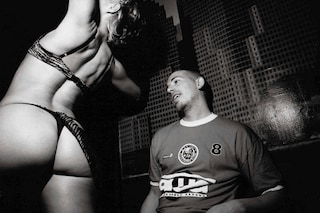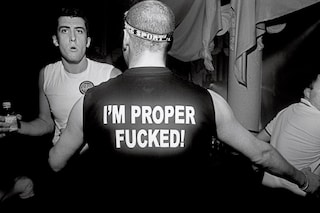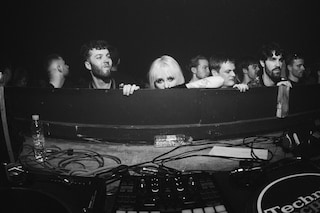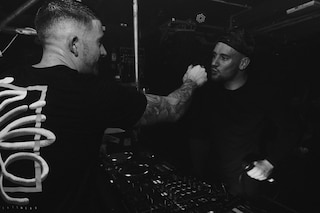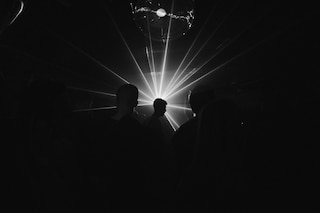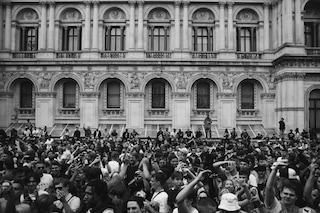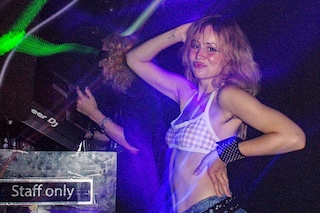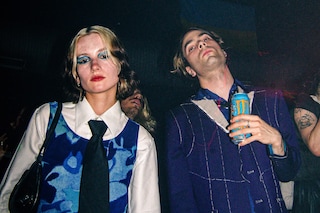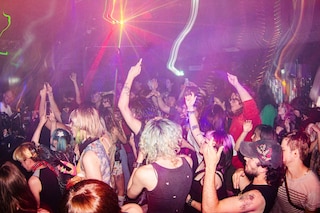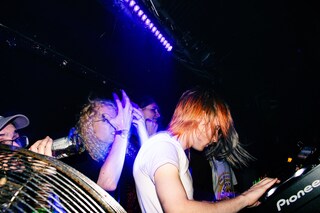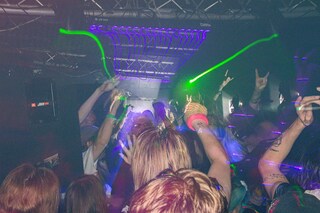From London’s illicit raves to Tokyo’s experimental pop scene and the sleazy world of 00s nightlife, here’s a roundup of the most hedonistic photo stories of the year
However simplistic the pursuit of pleasure might seem, hedonism means many things to many people. For some, it’s about pure escapism, abandon, and indulgence. For others, it’s more transformative – a mode of self-expression and community formation, or political rebellion and resistance.
Whatever the impulse, pleasure-seeking is about movement and sensation, and how to authentically capture that poses a challenge to photographers. As the year comes to a close, we revisit ten photo series devoted to crystallising the energy and allure of hedonism long after the come-ups have become comedowns.
From the glittering disco balls of Ibiza institutions to grubby, sweat-soaked warehouses on the outskirts of London; from Tokyo’s “Kawaii sleaze” club kids to New York’s post-internet party collectives, and an uninhibited queer festival outside Berlin, below are some of Dazed’s favourite hedonistic photo galleries of 2023.
Pacha remains Ibiza’s most iconic nightclub institution, its trademark twin-cherries synonymous with sun-kissed revelry on the Balearic island. As the club celebrated its 50th birthday this year, Dazed took a look through its expansive photo archive, which captures the changing fashions and faces of its dancefloor through the years. Even as the flares and crochet crop tops of the 1970s give way to neon bikinis and denim hotpants, and as the likes of Paris Hilton and Kylie Minogue take the place of Grace Jones beneath the disco ball, the throughline of this visual time capsule is ecstasy and excess.
When photographer Jaime Cano moved from his native Spain to London in 2020, he sought to remedy his shyness by heading straight for the sweat-drenched frenzy of the capital’s illicit raves. In airless rooms in abandoned warehouses, he snapped the silliness and vibrance of the makeshift scene. Messy kisses, graffiti tributes to ketamine, and the near-audible hiss of nos canisters populate his 2020s Rave Archives.
Gracie Brackstone’s photo series, Life’s a Parade, is an ode to the highs that heal us. After moving from London to Manchester in the wake of her mother’s death, she began capturing her life on film for the benefit of her younger sister. However, the project soon became a more defined record of finding kinship, love, and a renewed sense of self within the city’s queer community. “To me, Manchester is the home of freedom; moving here and finding my community felt like joining my own self-built circus,” the photographer told Dazed. Encompassing wild nights in Manchester’s famed Gay Village, playful rituals at afters, and impassioned street protests against the cost of living crisis, Brackstone’s series holds tight to life-affirming moments.
“Queer, easy, thrill-seeking, horny, and loves to dance” is how Poland-born, Berlin-based photographer Szymon Stępniak describes the crowd at WHOLE Festival. Taking place in an industrial park a few hours south of Berlin, the queer festival brings together the city’s already infamous party scene, as well as friends and chosen family from around the world, for a weekend of high-octane DJ sets, dancefloor revelry, lakeside cruising, creative performances, and intimate encounters in play spaces. Taken through summer heat and steamy rain showers, Stępniak’s celebratory film photos preserve the passion, pleasure and release of this year’s edition.
For hedonists who like it niche, Fetchish is as bizarro as it gets. The London-based multidisciplinary collective is formed of “architects, performers, art historians and designers, Deleuze-pilled individuals, (s)ex-intellectuals and game developers” who are united by a “celestial desire for cringe subversion and academia bimbofication” (very few of these words are in the Bible). The organisers partner with local club nights like Planet Fun and Kawaii Agency to throw maximalist spectacles for the city’s most eccentric revellers. Attendees – mostly “CSM students, dolls and post-Soviet offspring” – let loose on bouncy castles, throw cakes, confess their sins, and serenade their crushes, all amidst a soundscape of “terrifying four-dimensional pop music”.
Published in August, journalist Ed Gillett’s book, Party Lines: Dance Music and the Making of Modern Britain, provides a sweeping history of UK dance music, from the illicit reggae blues dances and acid-rock free festivals of the 1970s, through to 1988’s ecstasy-fuelled Second Summer of Love, and the increasingly corporate dance music culture of the post-Covid era. With a particular focus on partygoers and policing, Gillett charts the decades-long push-pull between the revolutionary potential of dance culture and the reactionary grip of the British establishment.
Taken from the archives of various nightlife photographers, and punctuated by pitch-black pupils, flushed cheeks, and jaws as unhinged as the dancing, the accompanying images portray the euphoric mayhem of raves in the 90s and early 00s.
During his travels to Japan, UK-born LA-based photographer Nick Haymes became aware of a “culture shift” happening among Tokyo’s young people. In the city’s experimental pop scene, a new wave of club kids was breaking away from Japan’s understated fashion norms to embrace a bolder, more individualistic sense of style. Haymes witnessed it firsthand at a Kyundesu X Subculture Party club event, a “seamless crossover” between his friends Tyler Shepherd and Gannon Baxter’s LA-based hyperpop Subculture Party and Tokyo DJ N2’s KyunDesu collective.
Glitter, bunny ears and ball gags abound in Haymes’ images of the party, where Tokyo-based styles like Gyaru and Harajuku merge with Ballroom, y2k, and fairycore. As Haymes explained to Dazed, this new generation takes its own “cultural references, [and] warps and owns them stronger than ever”.
Jason Manning’s exhibition Night by Night, which showed at Gallery 46 in London in April, offered a glimpse into the sweaty, sleazy world of 90s and 00s nightlife. Featuring off-the-cuff photos taken between 1997 and 2007 in clubs around the world, from London to Seoul, Singapore to Detroit, the exhibition captured what was perhaps the last truly unfiltered period of hedonism before the ubiquity of the smartphone.
Grins, gurns and gunfingers. Documentary photographer Yushy’s project Dance Floor Etiquette is a tribute to the UK’s underground rave scene. Avoiding “pre-manufactured mega-raves” at venues like London’s Printworks – which he describes as “almost like an influencer meet-up” – Yushy seeks out the rawness and rowdiness of basement venues thumping with breakneck BPMs. Dedicated to preserving this “niche part of youth culture” for future generations, the image-maker acts “like a fly on the wall”, spotlighting moments of intimacy and honesty that may go unnoticed in the heat and highs of the moment.
New York collective Club Cringe grew from an online community of meme page purveyors and group chats to become an IRL nightlife staple in the city, hosting playful underground parties that diverge from more “self-serious” clubbing subcultures. Headed by Jake Sillen, AKA DJ Trick, the collective brought its “full commitment to the bit” to London in July, staging a chaotic takeover of Vauxhall’s Union nightclub. Hyper-online artists, post-internet personalities and niche microscenes from either side of the Atlantic got weird to happy hardcore, bassline, gabber, donk, and experimental pop music – as captured by photographer Josh Homer.
